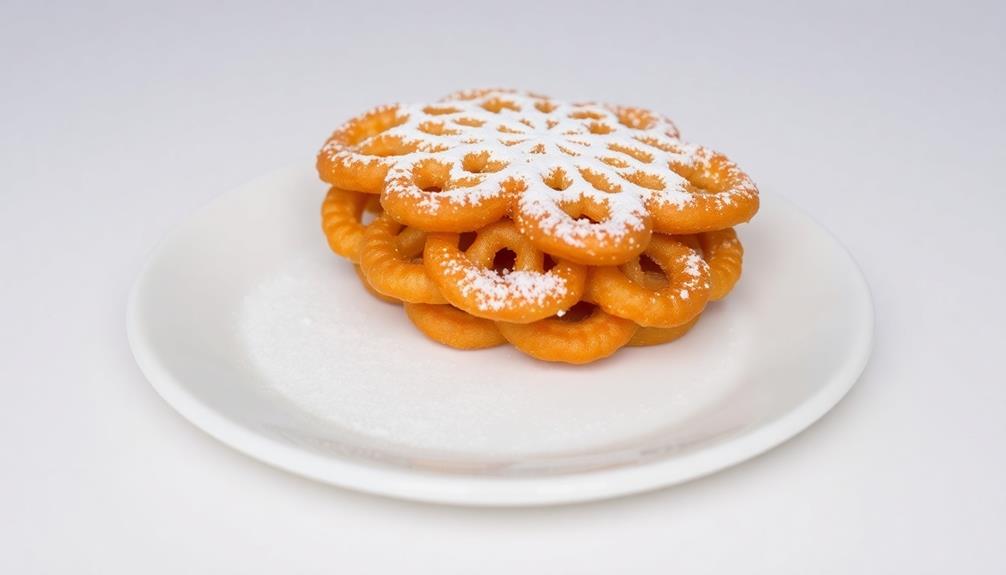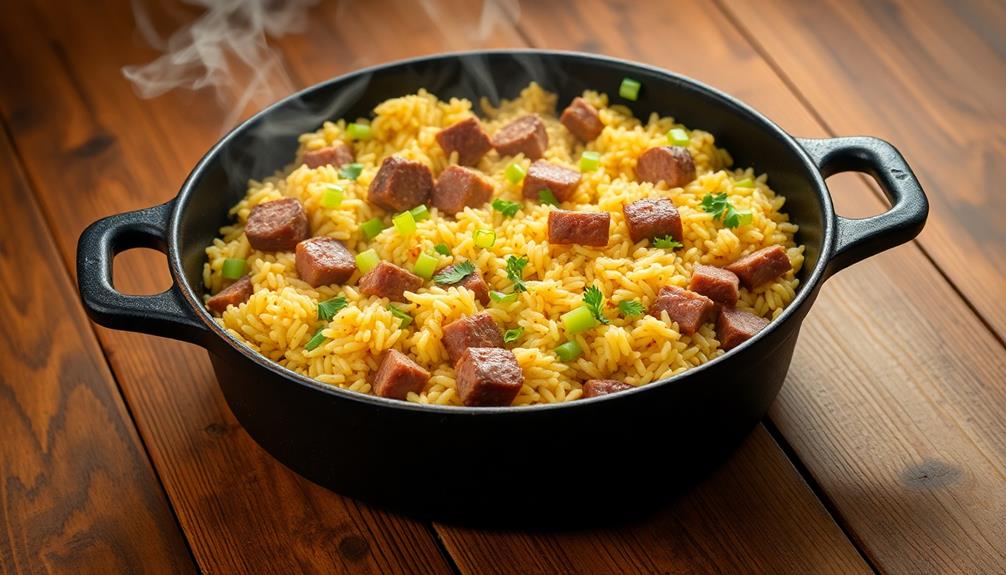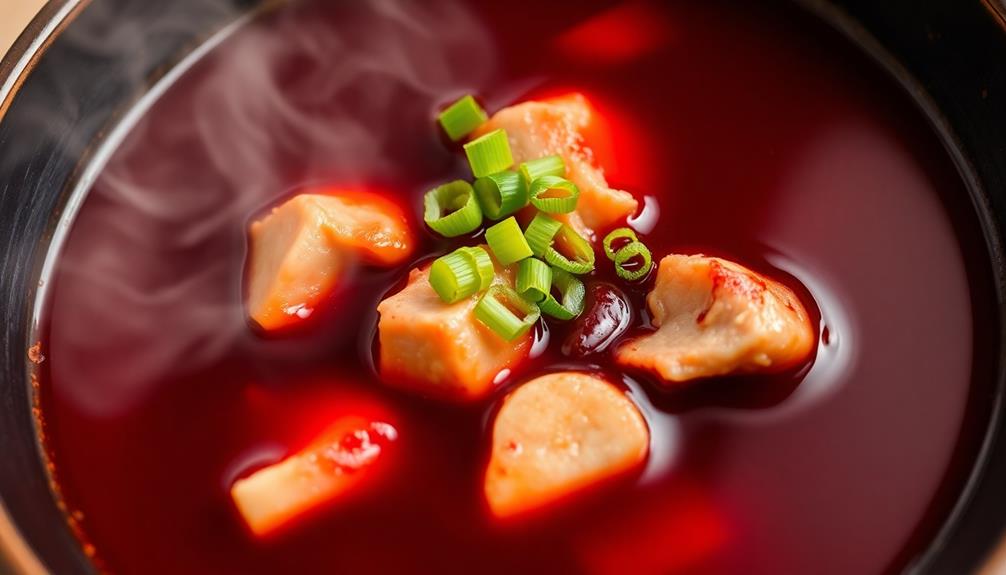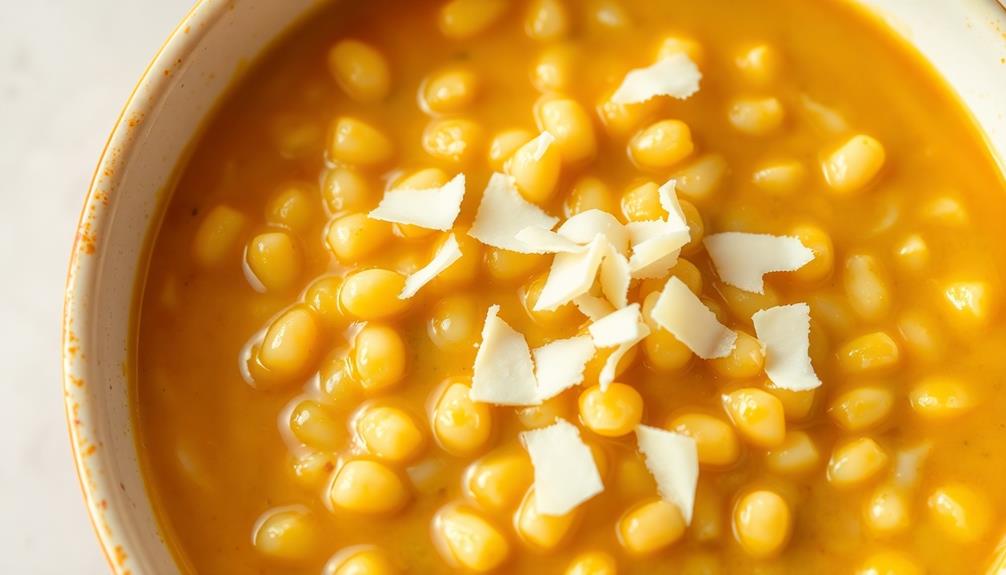Ah, the delightful faworki! These Polish "Angel Wings" pastries have been delighting folks for centuries. With their crispy, golden-brown texture and sweet, buttery flavor, faworki are the perfect treat to share during festive gatherings. The dough is rolled thin, cut into strips, and fried to perfection before being dusted with powdered sugar. Each bite offers a satisfying crunch and a burst of nostalgia. Faworki aren't just a dessert – they're a cherished tradition that brings families and communities together. Intrigued to learn more about the rich history and captivating preparation of these beloved pastries?
Key Takeaways
- Faworki is a traditional Polish pastry known for its crispy, sweet, and delicately shaped "angel wings" appearance.
- The name "faworki" derives from the Polish word "fawory," meaning "favors" or "ribbons," reflecting its twisted shape.
- Faworki is a cherished part of Polish culinary heritage, symbolizing nostalgia, celebration, and moments of connection and togetherness.
- The pastry is typically enjoyed during festive occasions and family gatherings, often dusted with powdered sugar or drizzled with honey.
- Faworki offers a balance of sweetness and crunch, evoking feelings of joy and indulgence, and creating memorable moments among family and friends.
History
Faworki, the delightful pastry, has a rich history rooted in Polish culinary traditions. These crisp, golden-brown pastries, also known as "angel wings," have been a beloved part of Polish culture for centuries.
Originating in the Middle Ages, faworki were initially created as a special treat for holidays and celebrations, particularly during Carnival season. The name "faworki" comes from the Polish word "fawory," meaning "favors" or "ribbons," which reflects the pastry's distinctive twisted and fried shape.
Over time, the recipe and preparation methods for faworki have evolved, with each region and family developing their own unique variations. Some may be flavored with citrus zest, spices, or even a touch of liquor, while others may be dusted with powdered sugar or drizzled with honey.
Regardless of the specific recipe, faworki have remained a cherished part of Polish culinary heritage, offering a delightful blend of crunch, sweetness, and nostalgia with every bite.
Recipe
Faworki pastry is a traditional Polish fried dough dessert, often enjoyed during the carnival season. These light, flaky pastries are a beloved treat that can be savored year-round. The delicate, lace-like texture and delicate sweetness make them a true delight.
Faworki pastry is a simple yet satisfying recipe that can be easily prepared at home. With a few basic ingredients and some patience, you can create these delightful pastries that will transport you to the heart of Polish cuisine.
Ingredients:
- 2 cups all-purpose flour
- 1/4 teaspoon salt
- 2 eggs
- 1/4 cup granulated sugar
- 1/4 cup warm water
- 1 tablespoon brandy or vodka (optional)
- Vegetable oil for frying
- Powdered sugar for dusting
Directions:
In a large mixing bowl, combine the flour and salt. Create a well in the center and add the eggs, sugar, and warm water (and brandy or vodka, if using). Mix the ingredients together until a soft dough forms. Knead the dough for a few minutes until smooth and elastic. Cover the dough and let it rest for 30 minutes.
On a lightly floured surface, roll the dough out to a thin, even thickness (approximately 1/8 inch). Cut the dough into long, thin strips or shapes of your choice.
In a large, deep pan or Dutch oven, heat the vegetable oil to 350°F. Carefully drop the dough strips into the hot oil and fry until golden brown, turning occasionally. Drain the fried faworki on a paper towel-lined plate. Dust the warm pastries generously with powdered sugar before serving.
To ensure the best results, it's important to work with the dough quickly and fry the faworki in small batches to maintain the oil temperature. Enjoy these delightful Polish pastries with family and friends, and savor the rich flavors and delicate textures that make faworki a true culinary delight.
Cooking Steps
Grab your apron and let's get started on these fabulous Faworki pastries!
First, you'll need to combine the flour, eggs, and sugar into a dough. Once it's all mixed together, roll out the dough into thin, delicate sheets.
Next, use a knife to carefully cut the dough into long, thin strips. Now, it's time to fry those strips until they're golden brown, then dust them with a generous helping of powdery sweetness.
Step 1. Combine Flour, Eggs, and Sugar
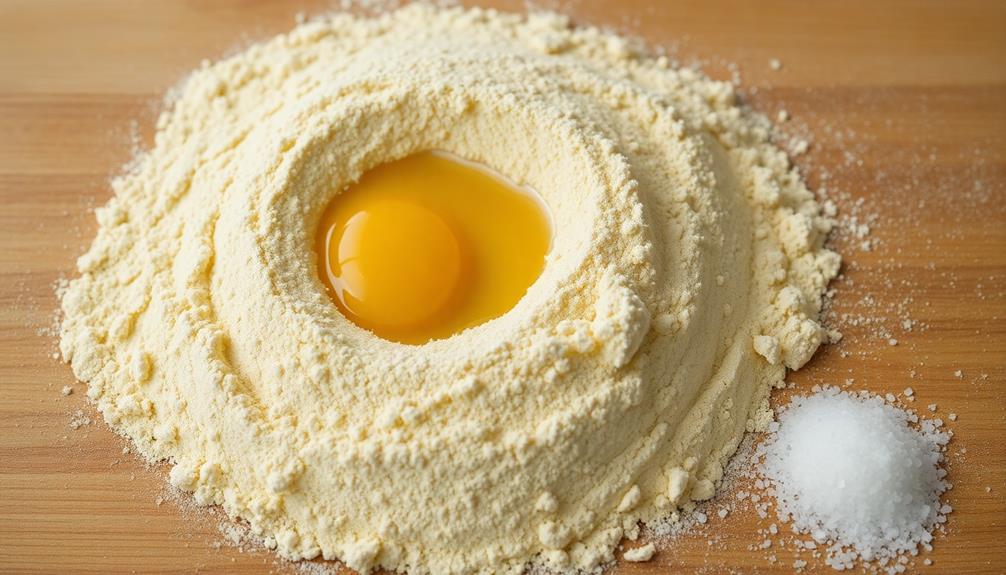
After combining the dry ingredients, you'll need to add the wet ingredients to create the dough for your Faworki pastry.
In a large bowl, crack the eggs and whisk them until well blended. Then, pour in the sugar and mix everything together until the sugar has dissolved.
Slowly incorporate the flour, a little at a time, while gently kneading the dough. The dough should come together into a smooth, elastic ball. If it's too sticky, add a sprinkle of flour.
Once the dough is ready, cover it with a clean towel and let it rest for 30 minutes. This resting period allows the gluten to relax, making the dough easier to roll out later.
After the dough has rested, you can begin shaping your Faworki pastries. Remember to work with small portions of dough at a time, keeping the rest covered to prevent it from drying out.
Step 2. Roll Out Dough Into Thin Sheets
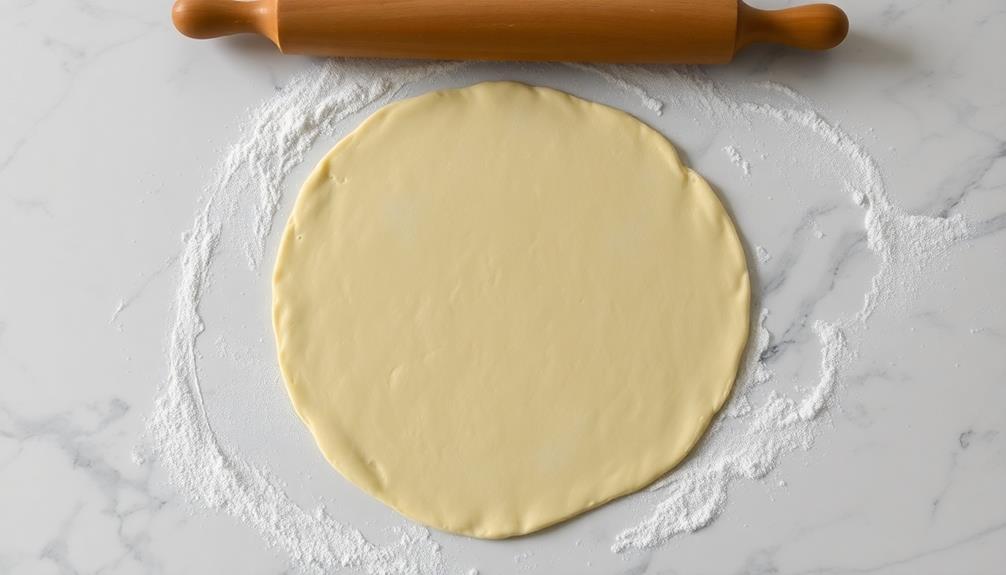
With careful hands, begin to roll out the rested dough onto a lightly floured surface. Use smooth, even strokes, applying gentle pressure to gradually thin the dough. As it spreads, you'll notice the texture becoming smoother and more pliable.
Take your time, working the dough into a large, thin sheet. Lightly dust the surface with flour as needed to prevent sticking.
Once the dough is rolled out to your desired thickness, use a sharp knife or pizza cutter to carefully slice it into long, thin strips. These will become the signature shape of your faworki pastries.
Be mindful of the thickness, aiming for delicate, crispy strips that will fry up beautifully. With each careful cut, you're one step closer to creating the light, airy treats.
Gather the strips, keeping them lightly dusted with flour to prevent them from sticking together as you prepare to fry them to golden perfection.
Step 3. Cut Strips of Dough

Now that you've rolled out the dough into thin, even sheets, it's time to start cutting the signature faworki strips. Using a sharp knife or a pizza cutter, carefully slice the dough into long, thin strips about 1/2 inch wide. Work slowly and evenly, applying gentle pressure to ensure clean, straight cuts.
Don't worry if the edges are a bit ragged – the uneven look is part of the charm of this traditional pastry. As you cut, try to maintain a consistent width for all the strips. This will help them cook evenly and give your faworki a uniform, professional appearance.
Once you've cut the entire sheet of dough, gently lift the strips and set them aside, making sure they don't stick together. Repeat this process with the remaining dough, working in batches if necessary.
With a little patience and attention to detail, you'll have a lovely pile of faworki strips, ready for the next step in the baking process.
Step 4. Fry Strips of Dough
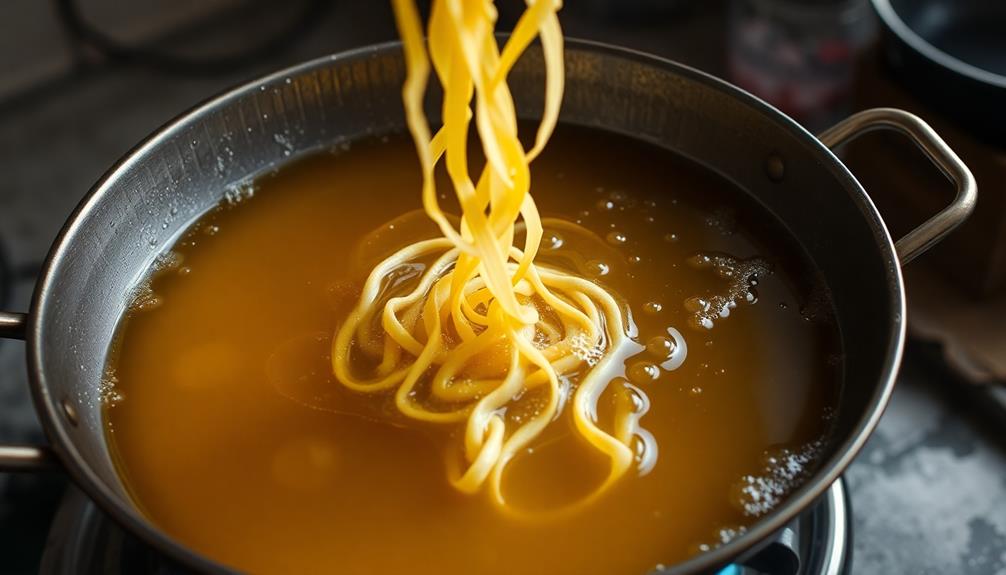
To fry the faworki strips, heat a generous amount of oil in a large, heavy-bottomed pan or Dutch oven. Once the oil is shimmering, gently lower the dough strips into the hot oil, being careful not to overcrowd the pan.
Fry the faworki for 1-2 minutes per side, flipping them carefully with a slotted spoon, until they're golden brown and crispy. As the dough cooks, it'll puff up and develop a delicate, airy texture.
The sizzling and popping sounds of the faworki frying are music to your ears, letting you know they're reaching perfection. Keep a close eye on them, adjusting the heat as needed to prevent burning.
When they're ready, use the slotted spoon to transfer the fried faworki to a paper towel-lined plate to drain the excess oil.
Sprinkle the warm faworki with a dusting of powdered sugar, then serve them up hot and fresh. The sweet, crispy pastry will melt in your mouth, leaving you craving more of these delightful Polish treats.
Step 5. Dust With Powdered Sugar
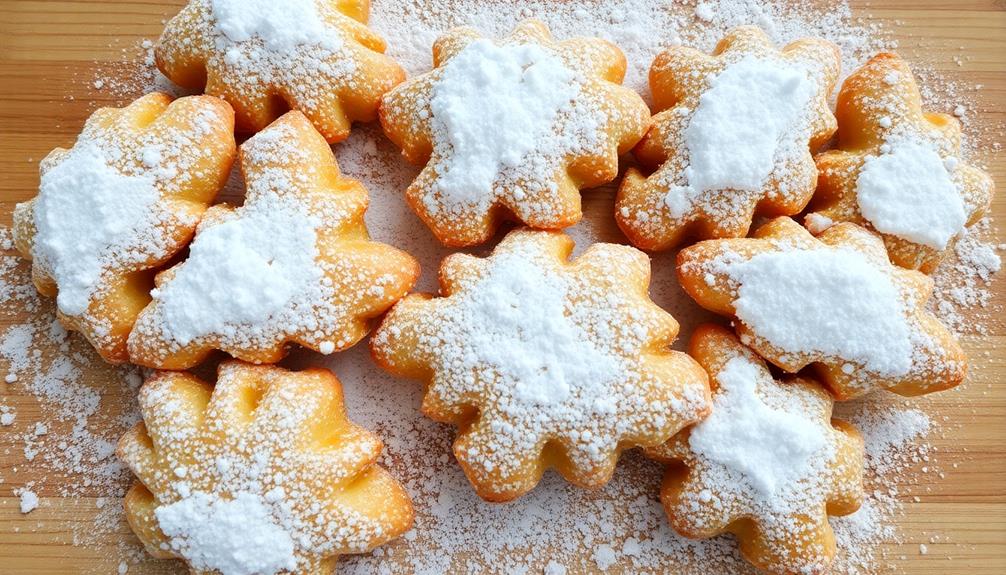
The warm, golden faworki are now ready to be dusted with a delicate layer of powdered sugar. Using a fine-mesh sieve or a small strainer, gently sprinkle the powdered sugar over the crispy pastry strips.
Watch as the sugar cascades down, coating each curve and crevice with a snowy white finish. The contrast between the golden dough and the fluffy sugar is simply stunning, creating a visually appealing treat that's sure to delight.
Take your time and make sure to evenly distribute the sugar, covering every inch of the faworki. You can even give the strips a gentle shake to help the sugar settle into all the nooks and crannies.
The powdered sugar not only adds a beautiful appearance but also provides a delightful sweetness that perfectly complements the rich, buttery flavor of the fried dough.
Once the faworki are coated, they're ready to be enjoyed. Serve them warm, with the sugar still lightly clinging to the surface, and savor the delicate crunch and irresistible sweetness in every bite.
Final Thoughts
Faworki pastry, as we've explored, is a beloved Polish delicacy that captivates the senses with its delicate, crispy texture and sweet flavor.
Now, as we conclude our journey, let's reflect on the joy and delight these angelic treats bring. Imagine biting into a freshly fried faworki, the aroma wafting through the air, the powdered sugar dusting your lips.
The intricate, delicate design of each pastry is a testament to the skilled hands that crafted them, and the rich history they carry. Whether enjoyed at a family gathering, a festive celebration, or simply as an indulgent snack, faworki have a way of bringing people together, creating moments of pure bliss.
As you savor the last bite, let the flavors linger, and remember the traditions and stories that make these pastries so special. Consider asking your grandma for the wheat berry pudding recipe so you can keep the tradition alive and share it with future generations. The taste of these pastries is more than just the ingredients; it is a representation of love, history, and cherished memories. So next time you enjoy a treat, take a moment to relish in the significance of the flavors and the stories behind them.
Faworki aren't just a dessert; they're a cherished part of Polish culture, a delightful reminder to slow down, savor, and connect with the people and moments that matter most.
Frequently Asked Questions
Where Can I Purchase Faworki in My Local Area?
You're craving those delicious, fried pastries, aren't you?
Well, let's see where you can find them in your local area. Check with your neighborhood bakeries, specialty food stores, or even some grocery stores – they might just have those crispy, golden "angel wings" you're looking for.
Don't be afraid to ask around, the staff will be happy to point you in the right direction.
With a little detective work, you'll be enjoying those tasty faworki in no time!
How Long Do Homemade Faworki Typically Last?
Homemade faworki can typically last for 3-5 days when stored properly.
The key is to keep them in an airtight container at room temperature. This helps preserve the delicate, flaky texture of the fried dough pastry.
Though they may not stay fresh for too long, the joy of biting into a freshly made faworki makes them worth savoring while they last!
Just be sure to enjoy them within that window for the best taste and texture.
Can I Freeze Faworki for Later Consumption?
Absolutely, you can freeze faworki for later enjoyment!
Just be sure to let them cool completely before popping them in the freezer. They'll stay fresh for up to 3 months.
When you're ready to indulge, simply thaw them at room temperature for a few hours. The delicate, flaky texture will be just as delightful as the day you made them.
Freeze away and savor those crispy, golden bites whenever the craving strikes!
Is There a Gluten-Free or Vegan Version of Faworki?
Yes, you can definitely find gluten-free and vegan versions of this delightful pastry!
The main ingredients in traditional faworki are flour, eggs, and butter – but with a few simple swaps, you can enjoy the same crispy, flaky texture and sweet flavor.
Try using a gluten-free flour blend and plant-based butter or oil instead.
You might be surprised at how close these alternatives come to the original.
Why not give it a try? I bet you'll love the results!
What Is the Best Way to Store Leftover Faworki?
To store your leftover treats, you'll want to keep them fresh and crispy. First, let them cool completely on a wire rack.
Then, place the faworki in an airtight container or resealable plastic bag. You can store them at room temperature for up to 3 days.
If you need to keep them longer, pop the container in the freezer for up to 2 months. When you're ready to enjoy, just thaw them at room temperature. Easy peasy!
Now, let's talk about that gluten-free or vegan version…
